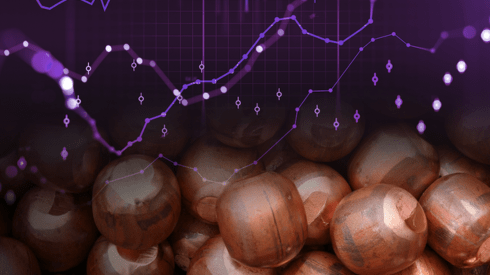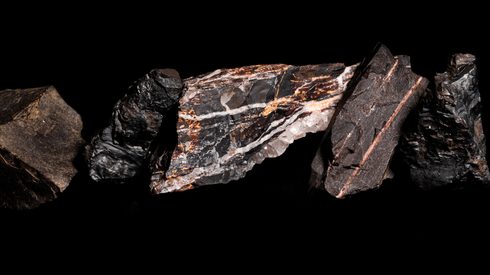First wave of gallium export licenses granted
Several exporters have reported obtaining licenses to ship gallium out of China in the past two weeks, after the country’s gallium and germanium export controls came into effect on August 1.
So far, the licenses have been granted for shipments to consumers, Fastmarkets understands, with no exports to traders having yet been approved.
In light of the licenses being granted, some market participants expected the prices for gallium in China to increase, when foreign demand returned to the market.
A change in sentiment does appear to have materialized in China’s gallium market, where prices have increased on five consecutive weekly pricing sessions after plummeting when the export control was imposed.
The assessed price for gallium 99.99% Ga min, in-whs China was 2,000-2,100 yuan ($277-292) per kg on September 22 – the last session before China’s national holidays. This marked a 6.49% increase from the 1,900-1,950 yuan per tonne on September 15.
“It’s because of hope [that foreign demand will push up prices],” one market participant said.
Any price relief from material being shipped out of China has not yet emerged in Europe.
Fastmarkets’ twice-weekly price assessment for gallium 99.99% Ga min, in-whs Rotterdam was $ 400-450 per kg on October 4, unchanged since September 8, but up from $250-265 per kg on June 30, which was the last price assessment before the Chinese government announced the export curbs on July 3.
Gallium is particularly vulnerable to supply disruption due to the concentration of its production in China. According to the US Geological Survey, China contributes some 98% of global production.
But market participants have indicated that the new controls may prove to be a boon for the establishment of Western production.
As for germanium – also covered under the export control – China is similarly the dominant producing country, with almost 68% of global production, yet overall production is more diversified, so the price impact of China’s export controls has been more restrained.
Hafnium demand stable, panic dissipates
The whirlwind price increase for hafnium over the last 18 months has generated much buzz in the market.
Driven by the metal’s inelastic supply, increased demand for superalloys generated by a post-pandemic return of the aerospace sector, and new consumption from the electronics sector, prices have increased to record highs.
Fastmarkets’ bi-weekly assessed price for hafnium, max 1% Zr, in-whs global locations was $5,200-7,100 per kg on September 22, stable from the previous session, but nearly four times higher than the $1,640-1,750 per kg a year earlier, on September 23, 2022.
The metal is used in high-performance super-alloys, particularly for aerospace, and can be used for high-performance computer chips.
Hafnium has been used in semiconductors since at least the mid-2000s. In 2007, Intel announced its deployment of two dramatically new materials to build the insulating walls and switching gates of its 45 nanometer transistors.
Since then, little information has been made public about how, and in what quantities hafnium is being used in the semiconductor industry.
However, reports suggest that top-end dynamic random-access semiconductor memory (DRAM) uses a thin layer of a hafnium-based material on top of its capacitors to insulate and block current leakage.
New demand for chips to support new artificial intelligence (AI) applications was particularly important for the metal’s recent price increase, according to a market participant.
Strong demand for the metal persists, according to the contact, though initial panic while consumers rushed to secure supply has somewhat dissipated.
“It is easier to buy today than it was six months ago, and there is material available in Europe… but consumers needing material in the short term can expect to pay higher prices,” they said.
Despite better availability, the market is still not yet in oversupply.
There still isn’t plenty of material, and some of the large producers are presold for most of next year.
“There still isn’t plenty of material, and some of the large producers are presold for most of next year,” the contact said.
Indium fundamentals still weak, market participants say
Despite a recent price increase driven by speculation in China, market participants told Fastmarkets that demand for the metal – particularly reliant on macro-economic and consumer sentiment – is soft.
Sources observed a continued reduction in demand for products using indium, including some types of consumer electronic batteries that use the metal to stabilize zinc, indium tin oxide (ITO) which is used in LCD screens and indium-based compounds used in semiconductors.
“My feeling is that going into next year the price will decrease,” a market participant said.
A second market participant observed that the chemicals sector had been particularly badly impacted by poor macro-economics and consumer sentiment.
Fastmarkets’ twice weekly price assessment for indium 99.99%, in-whs Rotterdam was $245-290 per kg on October 4, stable compared with the previous assessment on September 29.
Indium prices increased dramatically in the wake of the export controls on gallium and germanium, with market participants pointing to speculative action on the Liyang Zhonglianjin e-exchange as driving this increase in China.
Despite the higher prices in China, which produces and consumes most of the world’s indium, market participants report that lower prices are available outside the country.
Follow all the latest LME Week insights by visiting our dedicated content hub.






